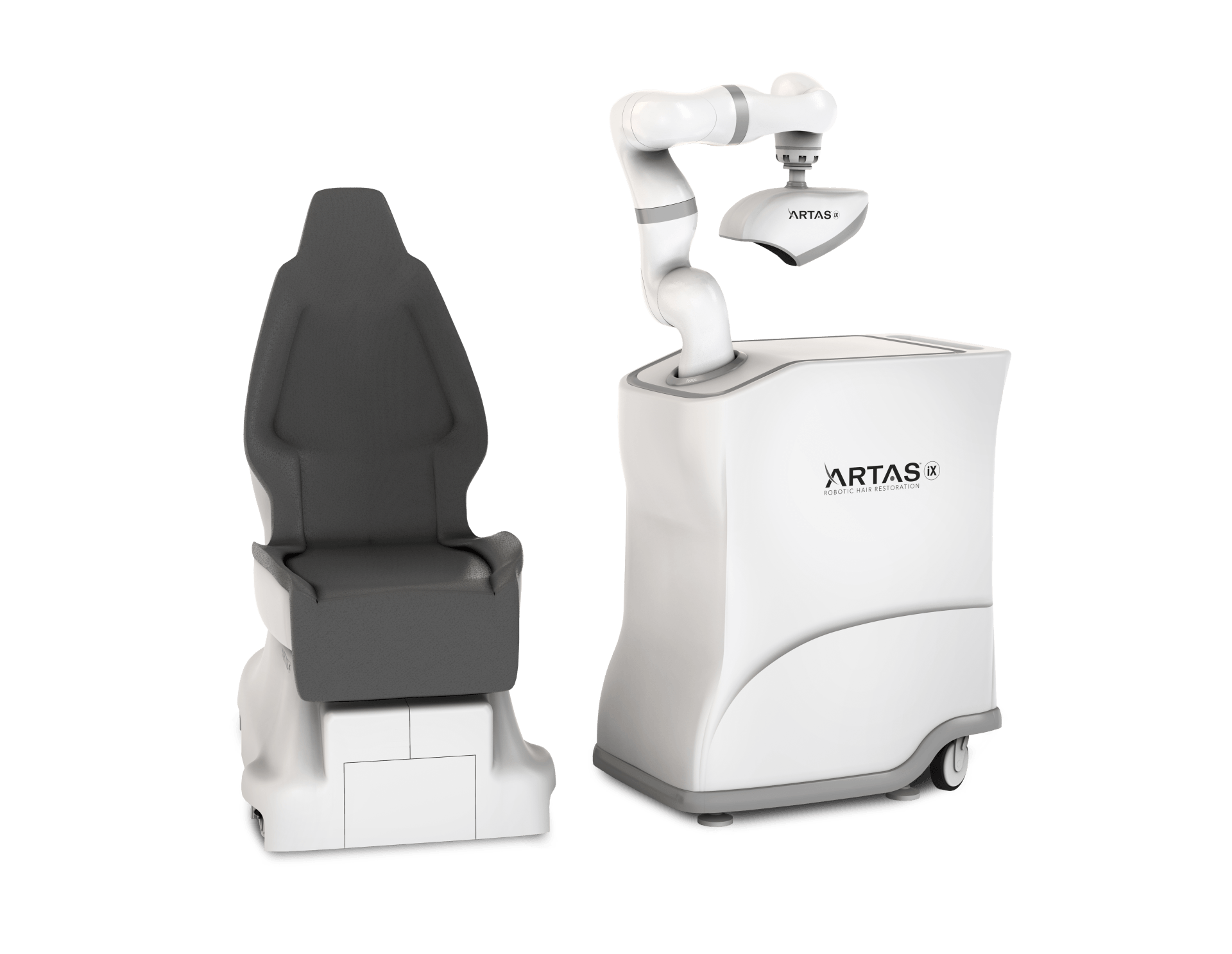Client Testimonials
What Is ARTAS®?
The ARTAS® robotic hair restoration device is an advanced, minimally invasive hair transplant system that uses Artificial Intelligence (AI) technology to deliver precise, natural-looking results without leaving a linear scar. Using advanced image-guided robotics, ARTAS® can precisely analyze and dissect the best grafts from your donor area thousands of times per session, and then accurately identify where they should be implanted to achieve a seamless,
personalized hairline that’s perfectly suited to you.
How It Works
The ARTAS® robotic hair transplant system starts by using 3D technology to help customize and plan your personalized hairline design. It then uses a high-definition stereoscopic vision system, robotic arm, and ARTAS Artificial Intelligence algorithms to identify and select the best hair follicles for transplanting. These follicles are then intelligently harvested with robotic precision and speed to preserve the natural look of your donor area, meaning no linear scarring. The ARTAS® procedure will also accurately identify and create an optimal recipient site and simultaneously implant the harvested hair follicles*. The minimally invasive process protects your existing healthy hair and maintains a natural appearance in both the donor area and the new implantation area.
NATURAL RESULTS: Noticeably thicker, natural-looking, and permanent hair growth starts around six months with continued growth over time.
MINIMALLY INVASIVE WITH NO LINEAR SCAR: The ARTAS® hair restoration system accurately and intelligently harvests and implants individual follicles without the use of scalpels, stitches, or staples, which means no unsightly linear scarring.
FAST AND EFFECTIVE: The robotic method enables greater precision and speed, making the procedure faster than other more manual hair transplant methods.
Frequently Asked Questions
Everything you need to know about your ARTAS® treatment
1. What is an FUE hair transplant?
Follicular Unit Extraction (FUE) is a minimally invasive hair transplant method that allows the removal of individual follicles from your donor area without a scalpel incision, and then implants them where you need more hair coverage
2. Will people know I have had a hair transplant procedure?
The ARTAS® system allows a minimally invasive procedure that is virtually undetectable. Unlike previous methods of hair restoration, there is no need for the surgical removal of a strip of scalp from the back and sides of the head. So, there is no linear scar after surgery, and no need for stitches or staples to close the wound. The benefit is a significantly shortened recovery time.
3. Do I have to shave my head to have a hair restoration procedure?
With the ARTAS® system, the FUE method can be done by getting a short trim. Trimming your hair in the donor area allows the ARTAS® system to accurately visualize, track, and harvest each grouping of hairs. You will receive detailed instructions from Dr. Silverman on the required length your hair needs to be before the procedure.
4. Does the ARTAS® procedure hurt?
As part of the ARTAS® procedure, the scalp is locally anesthetized until numb. If you still feel any pain during the procedure, Dr. Silverman will decide if it’s necessary to administer additional anesthesia to reduce discomfort. The patient typically feels no pain. Some patients can experience minor discomfort and swelling post-procedure, which subsides in one to three days.
5. How soon will I see results?
Transplanted hair grows naturally in phases. New hairs are seen about three months after the procedure and will continue to increase over the course of a full year. At approximately six months, you will enjoy a noticeable improvement and after a full year, you will see full results. However, individual results and timelines may vary for each patient.
6. How long will the hair last?
While hair loss may not necessarily stop after transplantation, the ARTAS® procedure uses your own permanent growing hair, typically from the back of your head, and Dr. Silverman then implants this hair to the thinning areas of your scalp. As this hair might not be susceptible to the conditions that cause male pattern baldness, transplanted hair will typically last a lifetime. Dr. Silverman will be able to assess your treatment options and discuss what you can expect.




VISIT US
HOURS
Sat Hours - Select days 9 am - 12 pm




Share On: